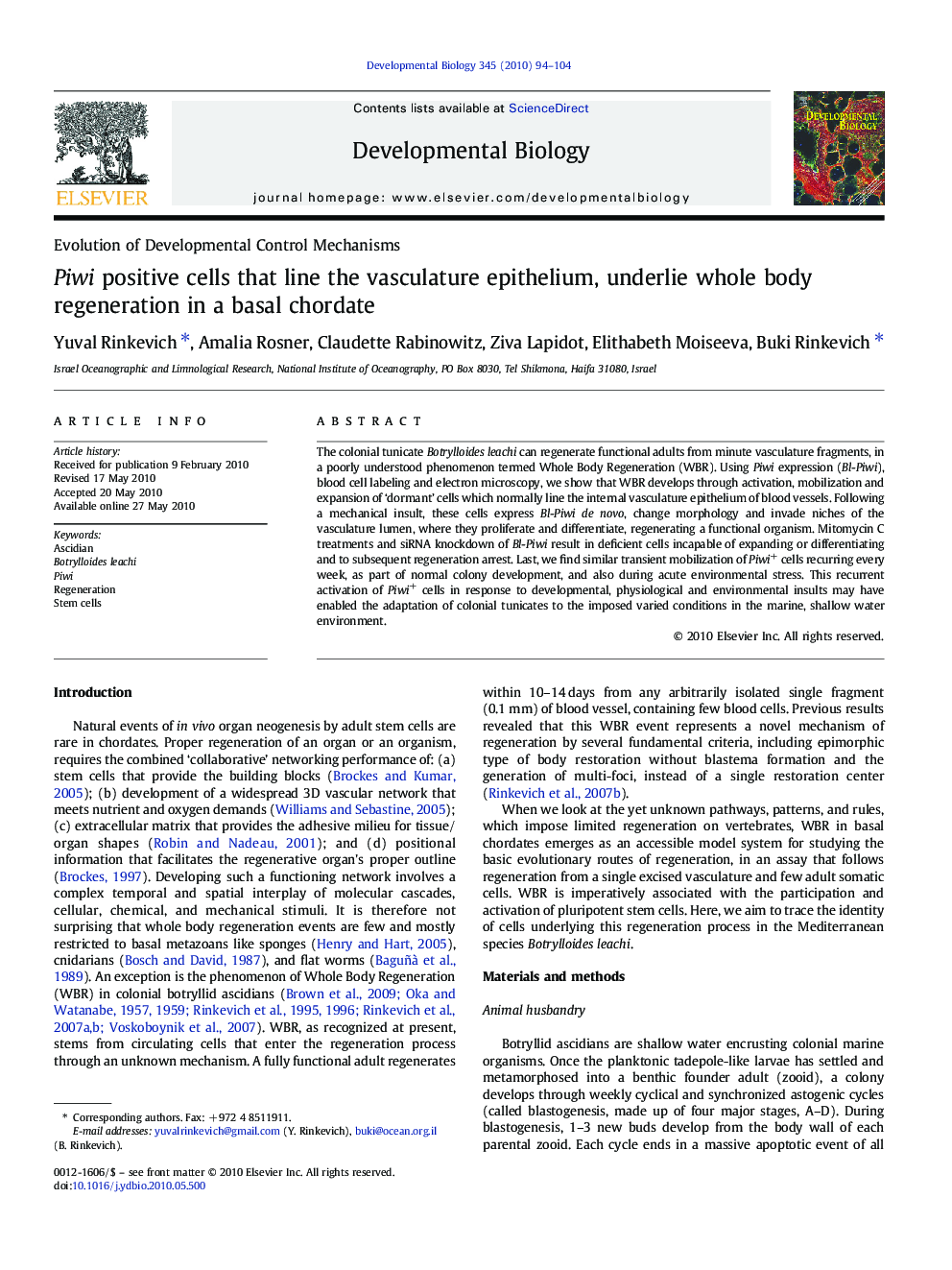| Article ID | Journal | Published Year | Pages | File Type |
|---|---|---|---|---|
| 2173815 | Developmental Biology | 2010 | 11 Pages |
The colonial tunicate Botrylloides leachi can regenerate functional adults from minute vasculature fragments, in a poorly understood phenomenon termed Whole Body Regeneration (WBR). Using Piwi expression (Bl-Piwi), blood cell labeling and electron microscopy, we show that WBR develops through activation, mobilization and expansion of ‘dormant’ cells which normally line the internal vasculature epithelium of blood vessels. Following a mechanical insult, these cells express Bl-Piwi de novo, change morphology and invade niches of the vasculature lumen, where they proliferate and differentiate, regenerating a functional organism. Mitomycin C treatments and siRNA knockdown of Bl-Piwi result in deficient cells incapable of expanding or differentiating and to subsequent regeneration arrest. Last, we find similar transient mobilization of Piwi+ cells recurring every week, as part of normal colony development, and also during acute environmental stress. This recurrent activation of Piwi+ cells in response to developmental, physiological and environmental insults may have enabled the adaptation of colonial tunicates to the imposed varied conditions in the marine, shallow water environment.
